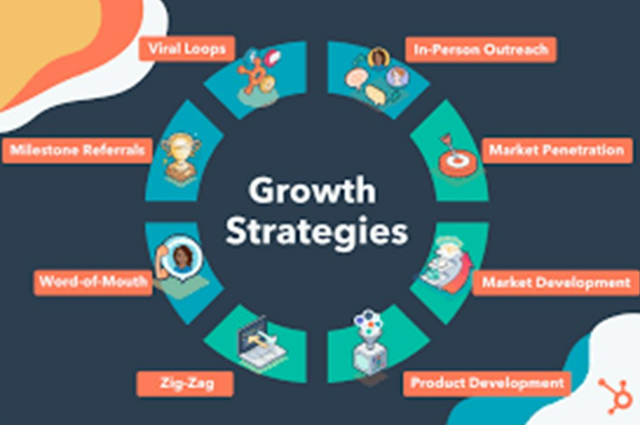
While the country is revamping and restructuring its pre-existed working dogmas post COVID-19, the shebang of perilous virus had incurred an irreversible loss from both, growth and reformative management. However, the incumbent administration has been taking micro and macro measures from multiple dimensions in order to facilitate a holistic development across demographics. The demand of management consulting has been increasing with a significant need to furbish the growth funnel keeping the “New-Learned” lessons from the “New Normal” scenario. In alignment with myriads of schemes and initiatives by government of India, health, digitalization and entrepreneurship have been marked as the key sectors to proceed with an integrated stance for country’s development.
One of the major issues while imposing the said proposals could be the variations of thoughts, reciprocation and intake amongst people belonging to different strata. As the ideations launched by either government officials or NGOs or private sector doesn’t follow utmost uniformity during its postulation of ideas – the launch and response could resist the overall growth prospect at the cost of formal adherence. While the bridge between effective imposition of strategies and tools of delivering those concepts into reality is detached to some extent, the ties between India and other developed countries have aided the engineering segment – leading to a wholesome cum collaborative method.
The existing bifurcation of rural and urban in terms of technology, learning and culture have backlogged certain aspects of growth over the years. With the labels of tier, I/II/III – it unintentionally discriminates the status and upholding of a place with respect to its current and future prospect. The affirmative set of actions pertaining which involves the participation of delegates across streams and position to roll-out the required set of constructions which would benefit both, the domestic periphery and firmly bolster international relations. In a longer run, the cluster of sites working simultaneously to lessen the gap between cities/town must ensure uniform facilities and growth opportunities for a conducive outline.

In alignment with PM’s vision of making India a developed country by 2047, gamut of opportunities has been crafted across sectors in order to make the citizens self-reliant and foster the culture of entrepreneurship via the Make in India scheme. Not just technological aspect, but agriculture, textile and social service platforms have been supported through these GOI initiatives. However, one of the dismays being lack of awareness at the elusive section of the society. Some of the factors which hinder the progression of growth could prelude to either known-exclusion or the lack of bridge. The initial one includes all the possibilities of social evils wherein the stakeholders intentionally resist the opportunities of growth whereas the latter one is due to the detrimental stance of underdeveloped conditions and pathways to enter the circle of growth.
Some of the addressing issues of mission India 2047, economical and infrastructural maturity have been patchy since past few years (excluding the COVID era) – in terms of policy making or gaining trust from the delegates involved. The decree of sudden monetization and pandemic, in the recent past, have resulted into a spontaneous adaptation of new “living” method. Post this, the demand for consulting both, in corporate and governance level have been increasing. They attempt to renovate the incumbent scenario, through incubating plausible scenarios with cost effectiveness and implementability.
There has been a rich history of government connecting with private consulting firms for certain projects and schemes postulation. A running anecdote is Samagra – a government-policy making consulting firm who’d tie-ups with Haryana Government to address the state’s recurring issues (education, digitalization and skill development programs for school/college dropouts). The change being the intake of young minds driving the programme for regular administration have truncated the traditional “experience requirement” before speaking-up. However, even before laying out such mass scaled growth strategies, the entities need to formulate an overall progression plan with respect to the ongoing case – could be internal, organic, M&A or collaboration with other stakeholders in order to make the process successful.
As observed, the diversification offered by consulting conglomerates often leads to direct their clients to invest a certain inbound amount and reciprocate post the outcome. However, in some of the developed countries, there exists a channel of queue wherein the interested firms tend to propose their solutions in order to win projects and enchant their offerings across demographics. Some of the trending methodology in the domestic periphery elaborates about the “Zig-Zag” model – which allows the initiators to deep-dive into area which aren’t common or requires addition of technology/operations. An Indian startup, BlueSemi, postulated a needle-free glucometer which gives accurate reading of oxygen, pulse rate etc. and removes the pricking issue (as a vast section of society resists blood test due to the same)

The dimension of product/service empowerment have created an unnecessary gauge across organizations to deliver and fulfil customer requirement and quick feedback intake, irrespective of the phase of implementation going-on. With more than 50 lateral connects with developed and developing countries, the trade of resources has been dyadic at an extent where one’s own requirement was compromised at times to supplement the allied nation. The junction of competitive growth is further bifurcated into 3 salient categories – Current advocacy, future plan and Runaway Reflection. While the initial two focuses on incumbent and upcoming producibility of their blueprint, the latter one briefs about the consideration of unaccounted situations and response from the participants upon whom the ideations have been impacted directly or indirectly.
Since last few decades, the method for growth strategies have been shaping itself by the virtue of collective mechanism and sustainable approach. The very objective for many firms in the current era is creating an ecosystem of services/offerings in order to encapsulate maximum customers and initiate a chain of network wherein they could stretch out to more numbers. The overall juncture of such process allows the services to upgrade throughout the process and explore the prospects of diversification and possibilities of onboarding external entities at an effective price optimality. While there isn’t any concrete method for analysing and proceeding with a “perfect” case for any domain, the common impetus includes variability account, measures to handle loss and pathways to channel profit and reciprocation from the community.
In the advent of technological advancement, with myriads of IoT devices cajoling the livelihood of people in an apt manner with easing the method of living and managing daily task – lead to situation of automated reliability. The major task while crafting such customized products/services is the acceptance and longevity of the ecosystem in the coming years. The power of retention and building the next big leap shouldn’t create a labyrinth for the users to feel like a gauge and remain dormant as an outcome. From orchestrating the bullet train deals to incubating channels of sustainable energy and promoting entrepreneurship – does underlines a holistic growth for the country in the coming years, not just the highlighted sectors but post juxtaposing from neighbouring counties, alliance and allies, the view of India have reformed by a 3rd world country to adroit, fighter and dynamically connected nations with remarkable results in every field.
. . .
References:
